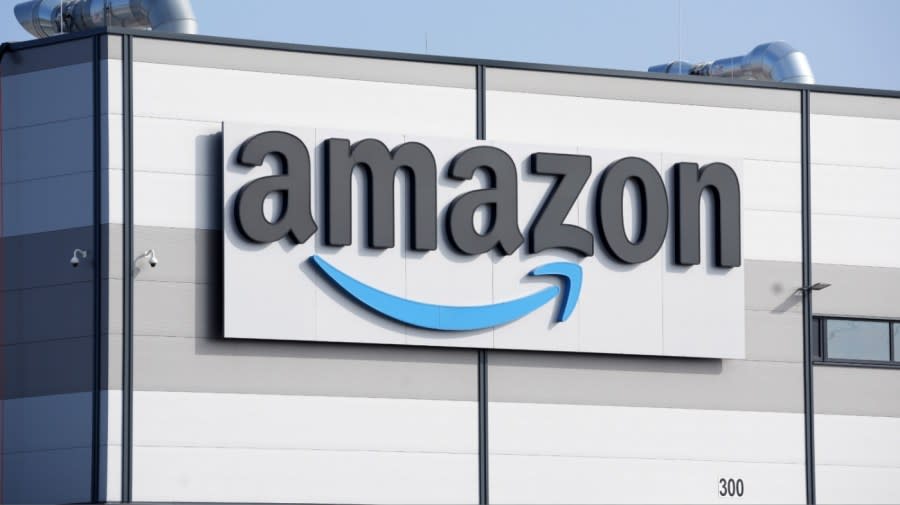What to know about the ‘Make Amazon Pay’ strike campaign

Thousands of Amazon workers and supporters worldwide staged protests Friday and planned more for Cyber Monday to demand the world’s largest retailer improve worker conditions, lessen its carbon footprint and pay more in taxes.
The Make Amazon Pay campaign isn’t anticipated to get in the way of Black Friday shopping, but seeks to send a message to Amazon founder Jeff Bezos and company leadership.
Here’s what you need to know:
It’s billed as the largest Amazon strike day ever
More than 80 labor and climate organizations are supporting protest and strike efforts at Amazon facilities worldwide, according to the groups involved.
Organizers said strikes and protests would take place in more than 30 countries Friday.
An organizer with GMB Union, a U.K.-based labor union, described the effort as “the largest day of industrial disruption in Amazon’s thirty-year history.”
The effort garnered support from more than 400 lawmakers from 38 countries for a protest in 2020, including Rep. Rashida Tlaib (D-Mich.) and former U.K. Labour leader Jeremy Corbyn.
Protests and walkouts span multiple continents
While much of Europe will see protests Friday, workers at an Amazon facility in Joliet, Ill., pledged to also walk out in solidarity with the effort. There was also a planned strike of Teamsters members in Palmdale, Calif., organizers said.
Supporters also planned protests at Amazon facilities in Massachusetts, Georgia and Illinois. Outside the U.S., organizers planned protest action in Japan, India and throughout Europe, including Germany, France, Spain and the U.K.
Hundreds of workers were striking Friday at warehouses in Coventry, U.K., and in multiple German cities, Reuters reported.
It is the fourth year of the campaign
This year marks the fourth consecutive annual protest for Make Amazon Pay, launched amid the COVID-19 pandemic, as Amazon saw record profits with an increase in online shopping.
The 2022 effort focused on 30 countries, specifically 18 warehouses in France and Germany, according to organizers UNI Global Union and Progressive International.
While there were also protests in the U.S. and worldwide, last year’s campaign was much smaller than what organizers planned for Black Friday and Cyber Monday in 2023.
“This day of action grows every year because the movement to hold Amazon accountable keeps getting bigger and stronger,” Christy Hoffman, general secretary of UNI Global Union, said in a statement.
“Workers know that it doesn’t matter what country you’re in or what your job title is, we are all united in the fight for higher wages, an end to unreasonable quotas, and a voice on the job,” Hoffman added.
Protesters demand worker benefits, climate action
The global protest movement is aimed at encouraging Amazon to improve its working conditions, including increased pay, more adequate breaks and benefits, as well as additional sick leave.
The same issues are at the center of labor fights with Amazon in the U.S., after multiple Amazon warehouses faced union votes in the last two years. The company’s Staten Island, N.Y., warehouse is currently the only unionized facility in the U.S. after a vote in April 2022.
Protesters also demand that the company replace part-time employment with full-time jobs, stop anti-union efforts and bargain with negotiating workers in good faith.
The effort also hopes to encourage Amazon to further commit to lowering its carbon footprint and pay more in taxes to countries it operates in, protesters said.
Amazon defends employee pay, benefits
Amazon has pushed back on the claims promoted by protesters, saying the “vast majority of these allegations are false or misinformed.”
“The fact is Amazon has created millions of good jobs, while helping create and support hundreds of thousands of small businesses around the world. We offer great pay and benefits for our employees,” Amazon spokesperson Mary Kate Paradis said in a statement to The Hill, “with great career opportunities, and provide a modern and safe working environment for all.
“We continue to invest in the countries and communities where we operate, and we’re proud to be the world’s largest corporate purchaser of renewable energy,” Paradis added. “That’s part of our drive to be net zero carbon by 2040, with billions already invested in packaging reduction, clean energy and electric vehicles.”
Brad Dress contributed to this report.
For the latest news, weather, sports, and streaming video, head to The Hill.

